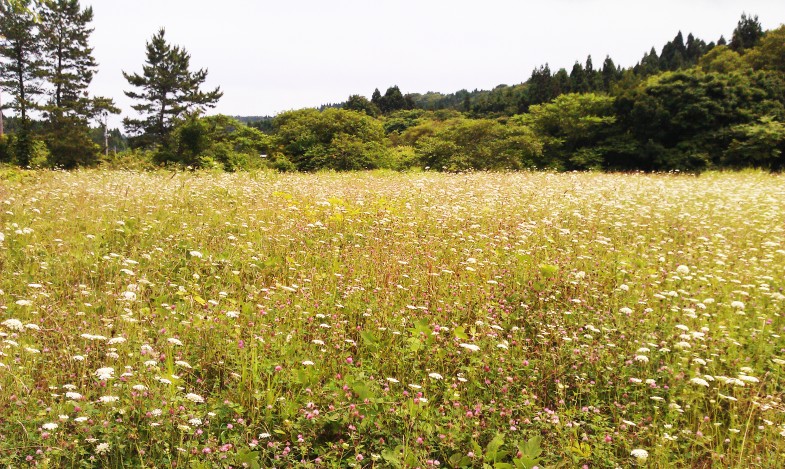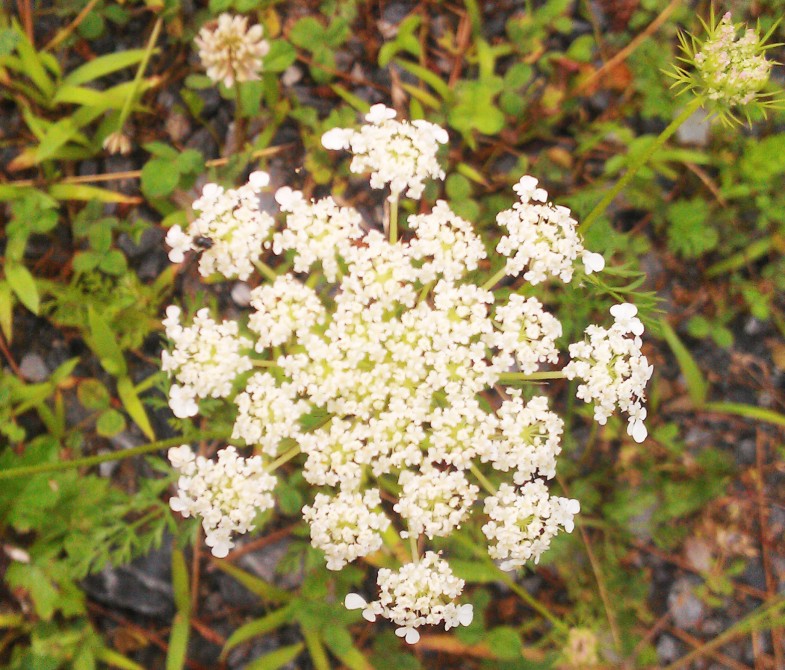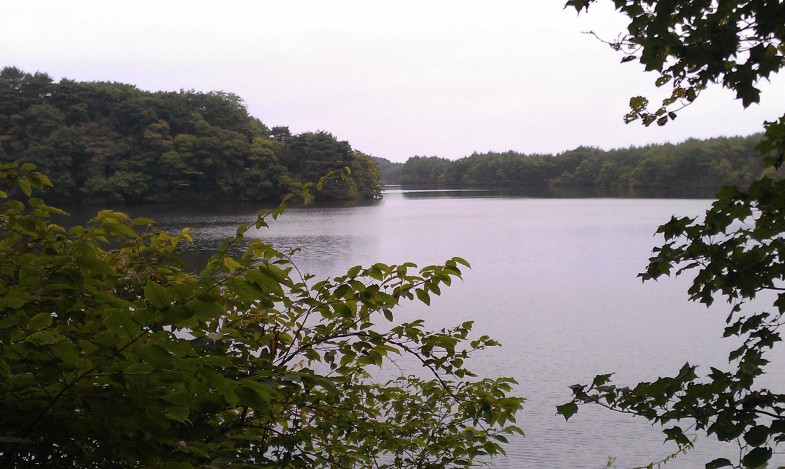
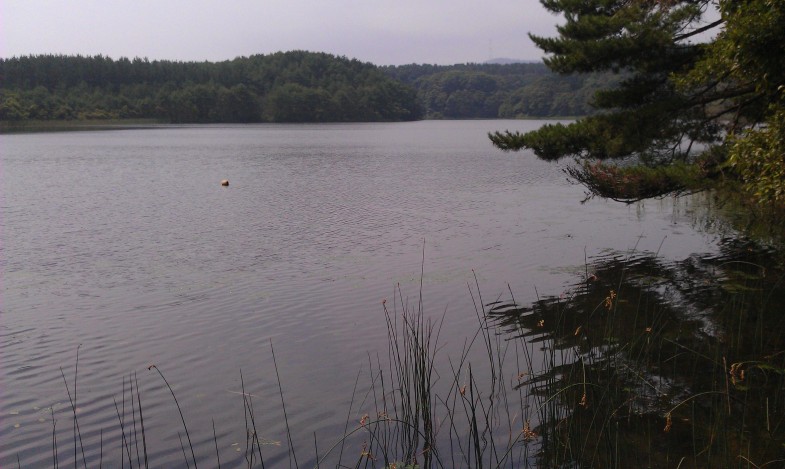
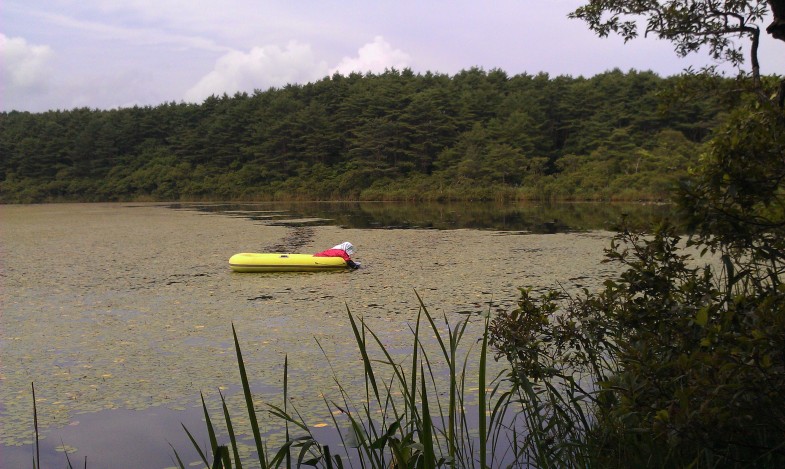
«دریاچه تپه شنی» ساحلی شنی است که در اثر وزش باد موجهایی به وجود میآورد.、اینها باتلاق های آب شیرین هستند که به طور طبیعی هنگام جاری شدن رودخانه ها به گودال ها (ساگاتا، استان نیگاتا و غیره) تشکیل می شوند.。شن های زیر آب در اثر جریانات و امواج اقیانوس مانند خاکریز متورم می شوند و راه خروج را مسدود می کنند.、(این دریاچه متفاوت از دریاچه های آب شور مانند دریاچه ساروما و هاچیروگاتا تشکیل شده است)。دریاچه تپه خود موجودی ارزشمند است که در سراسر جهان در حال از دست رفتن است.、ایجاد یک محیط با ارزش بیولوژیکی。
Sand dune lake is a natural freshwater pond in a sandhill. It was shaped by wind. The wind had been carring sand and formed ups and downs, and then water stream into hollow places. It is not only very valuable existence itself in the world but also it gives important environment for biodeversity that’s being lost.
در روستای هیگاشیدوری、تعداد زیادی "دریاچه تپه های شنی" بزرگ و کوچک وجود دارد (13 باتلاق به تنهایی)。دهکده هیگاشیدوری، تپه های شنی ساروگاموری و تالاب های پشت به عنوان یکی از 500 تالاب مهم ژاپن انتخاب شده اند (در واقع می توان گفت که بیشتر شبه جزیره شیموکیتا به این ترتیب انتخاب شده است).。این تپه شنی جنگلی میمون ga (عرض 1-2 کیلومتر)、تپه های ماسه ای شیموکیتا ترکیبی از تپه های ماسه ای (طول کل 17 کیلومتر) و تپه های ماسه ای است که کمی به داخل خشکی می روند.、اگرچه کمی شناخته شده است، اما در واقع بزرگترین تپه ماسه ای در ژاپن است.。دلیل اینکه معلوم نیست、جنگل های محافظ باد و شن اطراف تپه های شنی را احاطه کرده اند.、چیزهایی که دیدن آنها برای مردم سخت است、بیشتر آن توسط وزارت دفاع و سایرین به عنوان محدوده آزمایش بالستیک استفاده می شود.、زیرا ورود ممنوع است.。
There are many dune lakes in Higashi-dori village. Named lakes are minimum 13s. Salugamori sandhill (1~2 km width, 17 km length) include the rear wetland in this village has selected one of 500 of the important wetland of Japan (Actually most of Shimokita peninsula is selected also). Additionaly, Shimokita sandhill (includ this Salugamori sandhill with the next ones) is really the biggest one in Japan. However almost all japanese don’t know of it. One of the reason is that this place is hidden from the roads by pine grove for protect the wind and the sand. The other one, here is off limited, because this ares has been useing for test site of trajectory of Ministry of Defence (MD).
خود دریاچه تپه در خارج از محدوده وزارت دفاع قرار دارد.、برخی از آن به نظر می رسد برای اهداف ماهیگیری نیز استفاده می شود.。با این حال، جنگل های کاج مورد استفاده برای حفاظت از باد و شن و ماسه نیز بزرگتر شده اند.、بسیاری از جاده های منتهی به باتلاق در حال ناپدید شدن هستند.。کاهش جمعیت و پیری در اینجا نیز ادامه دارد.、در حال حاضر هیچ تحقیق دانشگاهی در حال انجام نیست.。
These are out of the area of MD. A few lakes of it look as useing fishery sometimes but not often. Most of the roads to go there is being lost by growing thickly weeds and pine grove. Creasing depopulation and ageing there. Academic reserch stopped now.
عکس ها از بالا به پایین هستند (از شمال به جنوب مرتب شده اند)、اونوما、ساکیو مارش、آرانوما。اندازه و عمق کمی متفاوت است، اما همه آنها در حالت طبیعی خود هستند.。اونوما یک میگو بزرگ است、Sakyo-numa برای Aegagropila Linnaei مشهور است.、حالا که هیچ تحقیقی انجام نشده چه می شود؟。آرانوما 1-2 متر عمق دارد.、Brasenia schreberi در حال برداشت است.。
Photo:(above) O-numa. Small river prawn lives in. (midlle) Sakyo-numa. Sakyo-numa is famous for “Hime-malimo” (small moss ball), but how is it now? (bottom) An old woman was picking “Jun-sai” (the water shield) from the water at lake Ala-numa. ※numa means lake or pond. All of dune lakes are Nature.
